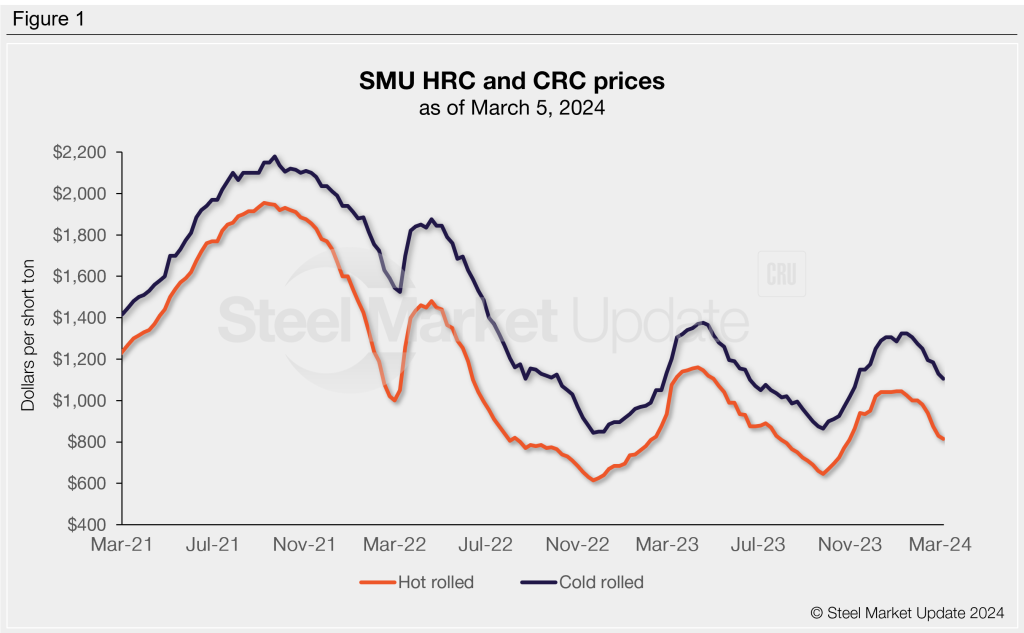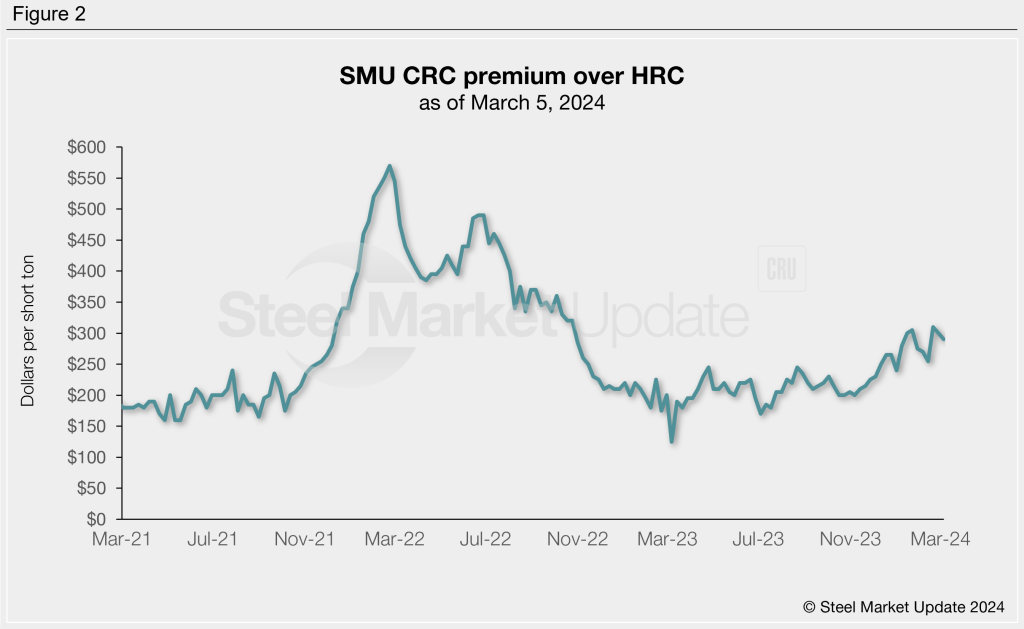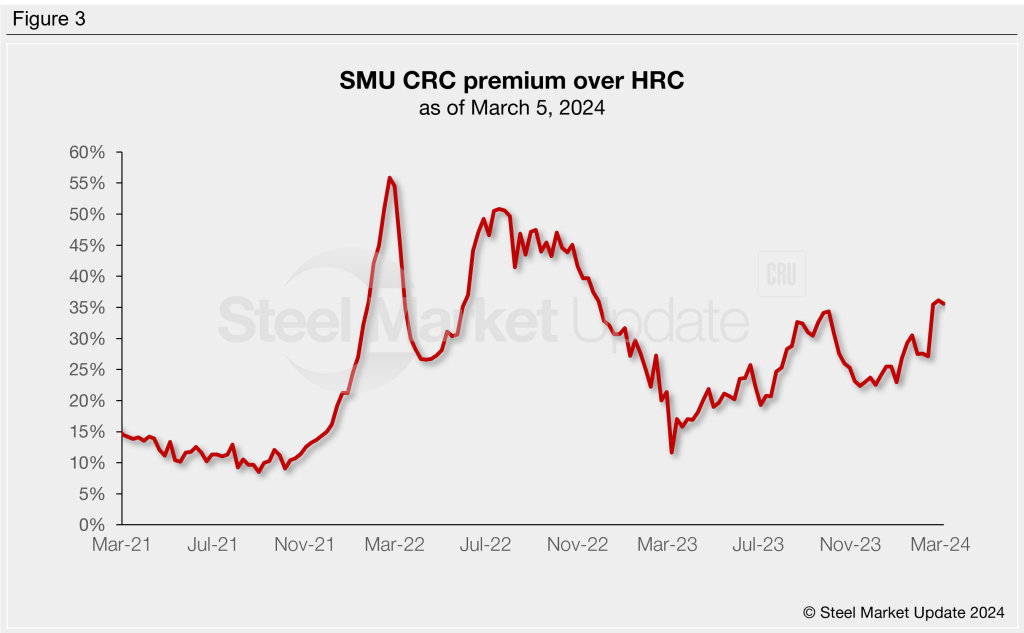SMU Data and Models

Price gap between HRC and CRC continues to widen
Written by Brett Linton
March 7, 2024
The price premium cold-rolled coil (CRC) carries over hot-rolled coil (HRC) remains wide, according to our latest market check. Based on our steel price indices published Tuesday, the spread between these products is at the fifth-highest weekly level seen over the last 16 months.
Figure 1 below shows SMU’s average HRC and CRC base prices as of March 5.
SMU’s average hot rolled price was $815/short ton this week, down $165 from one month prior. HRC prices are now $180/st lower than the highs seen at the start of the year, having fallen by an average of $26 each week of 2024.
Cold rolled prices eased to $1,105/st this week, down $145 compared to one month ago and $220 less than the mid-January peak. The average weekly decline in CRC prices in 2024 is slightly less than HRC at $20/st.

As Figure 2 shows, the latest HRC vs. CRC price spread is $290/st as of March 5, up $20 from early February. The average price spread throughout 2024 is now up to $283/st. Prior to the last few weeks, we have not seen spreads this high since Oct. 2022.
Recall that in early 2022, CRC’s premium over HRC peaked at $570/st, a record high. Throughout the second half of that year, the spread eased lower and returned to typical levels by year end. We saw relatively stable spreads throughout 2023, averaging $210/st across the year. In December, the delta began to widen again and has continued to do so since.
Are sub-$200/st premiums now a thing of the past? Over the past two-and-a-half years, we have only seen 12 weeks where the price spreads were beneath that threshold.

Figure 3 shows the spread from a different vantage point, graphing the cold rolled premium over hot rolled as a percentage of the HRC price.
While CRC’s percentage premium over HRC took a dive in late 2022, the premium recovered throughout 2023, peaking at 34% in October. After briefly easing through the final months of last year, the spread jumped back up in February and now stands at a 16-month high of 36%.

You can chart historical steel prices and more using SMU’s interactive pricing tool on our website.

Brett Linton
Read more from Brett LintonLatest in SMU Data and Models

SMU Scrap Survey: Sentiment Indices rise
Both current and future scrap sentiment jumped this month, though survey participants reported responses before key trade news was announced.

SMU Survey: Sentiment splits, buyers have better view of future than the present
SMU’s Steel Buyers’ Sentiment Indices moved in opposite directions this week. After rebounding from a near five-year low in late June, Current Sentiment slipped again. At the same time, Future Sentiment climbed to a four-month high. Both indices continue to show optimism among buyers about their company’s chances for success, but suggest there is less confidence in that optimism than earlier in the year.

SMU scrap market survey results now available
SMU’s ferrous scrap market survey results are now available on our website to all premium members. After logging in at steelmarketupdate.com, visit the pricing and analysis tab and look under the “survey results” section for “ferrous scrap survey” results. Past scrap survey results are also available under that selection. If you need help accessing the survey results […]

SMU flat-rolled market survey results now available
SMU’s latest steel buyers market survey results are now available on our website to all premium members. After logging in at steelmarketupdate.com, visit the pricing and analysis tab and look under the “survey results” section for “latest survey results.” Past survey results are also available under that selection. If you need help accessing the survey results, or if […]

SMU Survey: Sheet lead times stabilize, plate contracts
Mill lead times for sheet products were steady to slightly longer this week compared to our late June market check, while plate lead times contracted, according to steel buyers responding to this week’s market survey.
